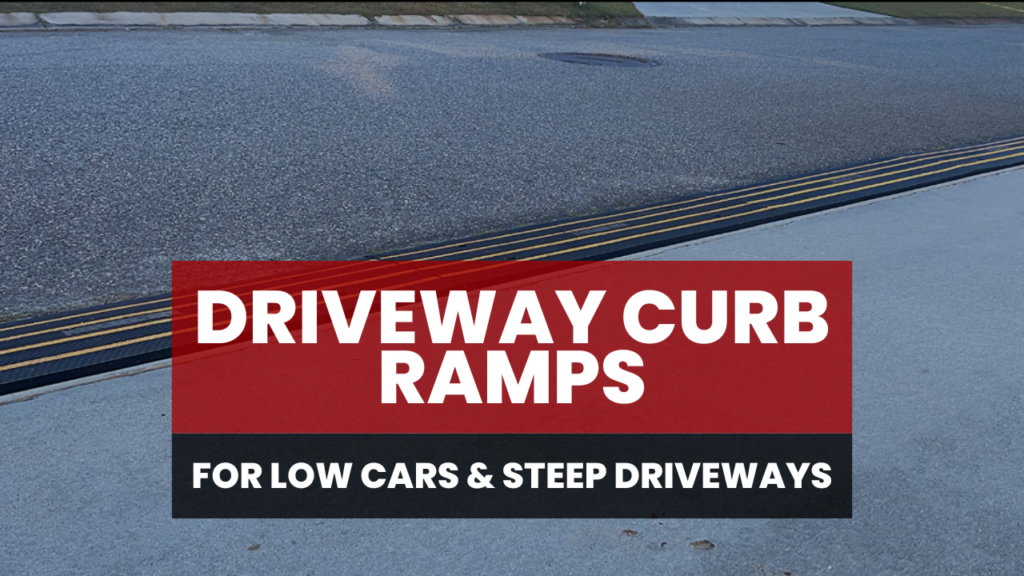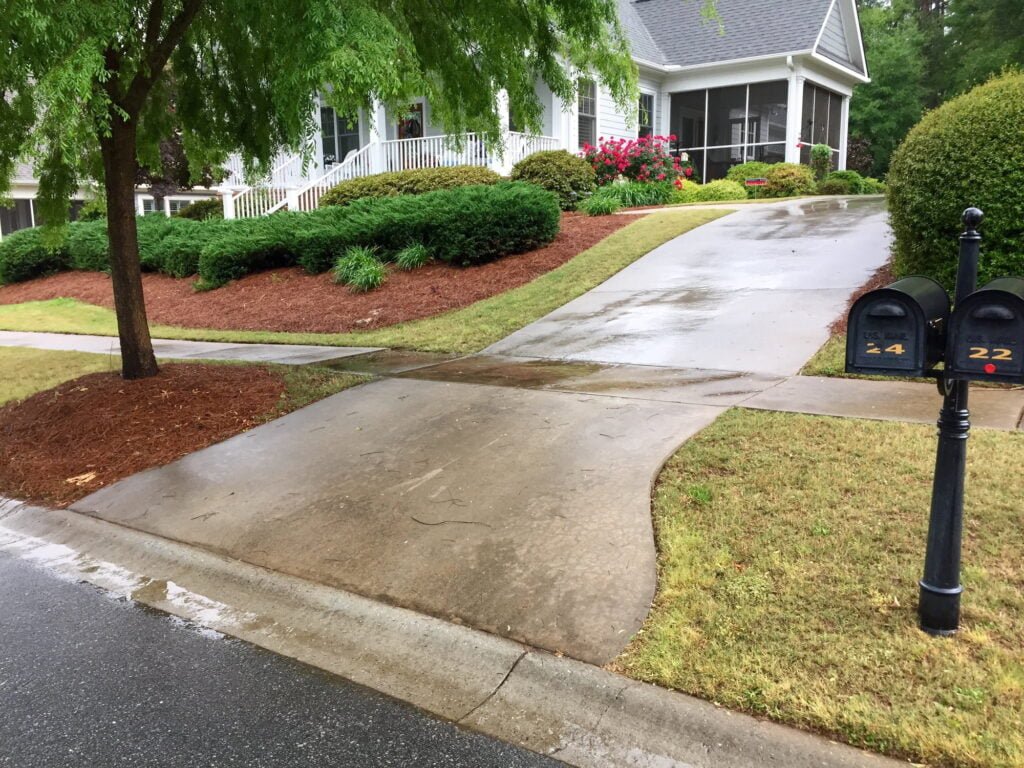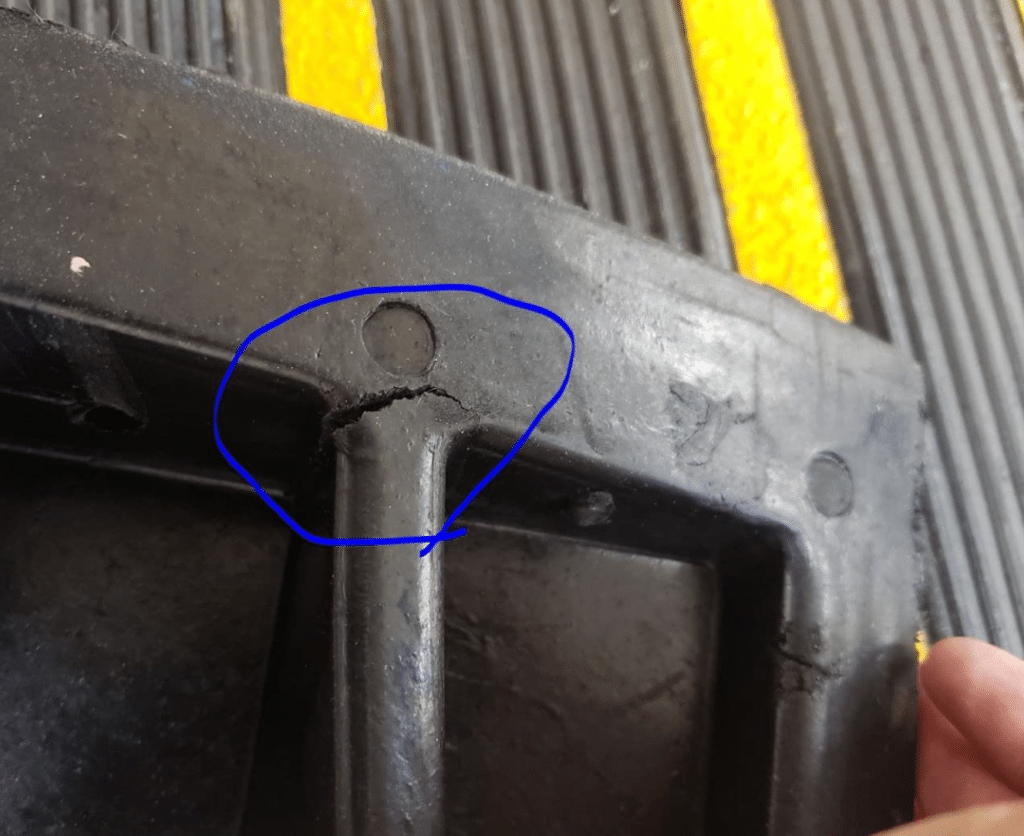Tired of scraping the bottom of your car every time you pull in or out of your driveway? Driveway curb ramps provide a smooth and damage-free entry and exit for low cars and steep driveways. Stop worrying about undercarriage damage, misaligned wheels, or other unnecessary damage. This blog post is your ultimate guide to understanding, choosing, and installing the perfect driveway curb ramp.
We will explore various materials, sizes, and designs to find the best fit for your vehicle and driveway. Additionally, we’ll delve into enhancing safety and traction, installation and maintenance tips, and comparing prices and shipping options. Let’s dive in!
Key Takeaways
Choose the right driveway curb ramp for your vehicle, considering factors such as material, size & weight capacity.
Enhance safety and traction with features like deep ribbed treads and textured surfaces.
Compare prices & shipping options to ensure best value for a long lasting solution.
Choosing the Right Driveway Curb Ramp
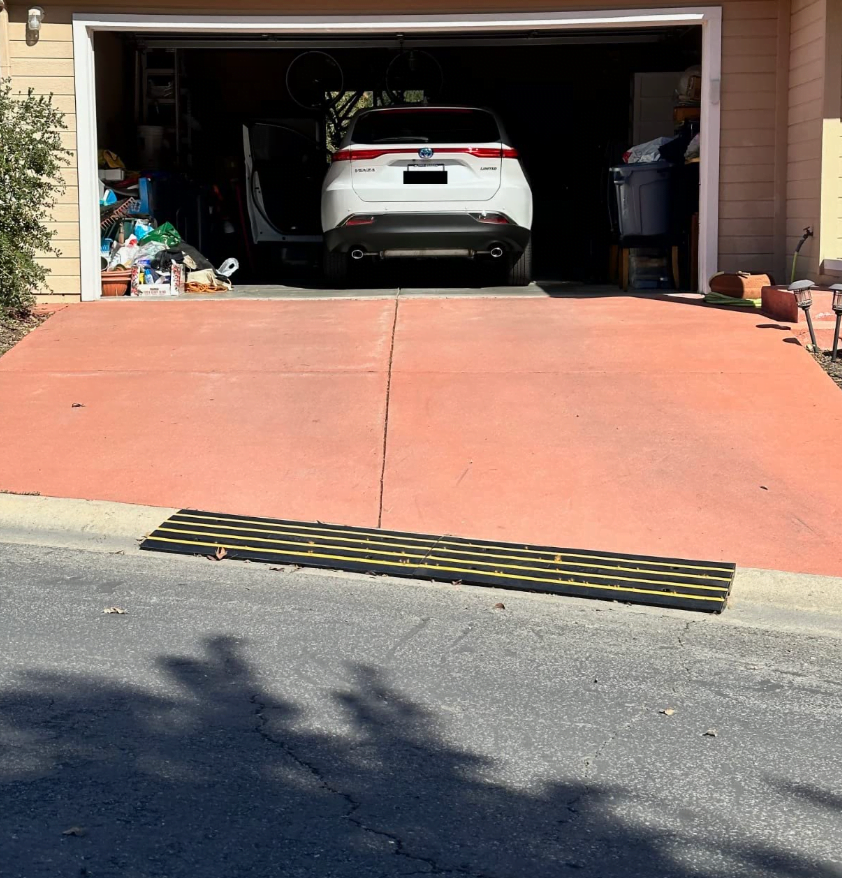
Choosing an appropriate driveway curb ramp is key to providing smooth, damage-free access for your vehicle. Factors to consider when choosing a ramp include:
Material options
Size
Weight capacity
Vehicle compatibility
A well-chosen ramp will not only protect your car from scrapes and bumps, but also provide long-term durability and stability for various vehicle types, from compact cars to RVs and even golf carts.
Whether you have a sports car with low ground clearance or a family vehicle that needs to navigate a steep driveway, understanding these factors will help you make an informed decision. So, it’s time to delve into the details and understand the various material options, sizes, and vehicle compatibility features that contribute to making a driveway curb ramp the optimal solution for your driveway needs.
Material Options
Driveway curb ramps are available in a variety of materials, each with its own set of advantages. The most common materials used in the construction of curb ramps are:
Rubber: known for its durability and excellent traction, making it a popular choice
Plastic: lightweight and easy to install, making it a convenient option for those who prioritize ease of use
Metal: robust and highly durable, ensuring long-lasting performance even under heavy use
When choosing the material for your driveway curb ramp, consider factors such as durability, traction, and ease of installation that best suit your needs. The right material will not only provide a smooth and safe access, but also ensure a long-lasting solution for your driveway.
Size and Weight Capacity
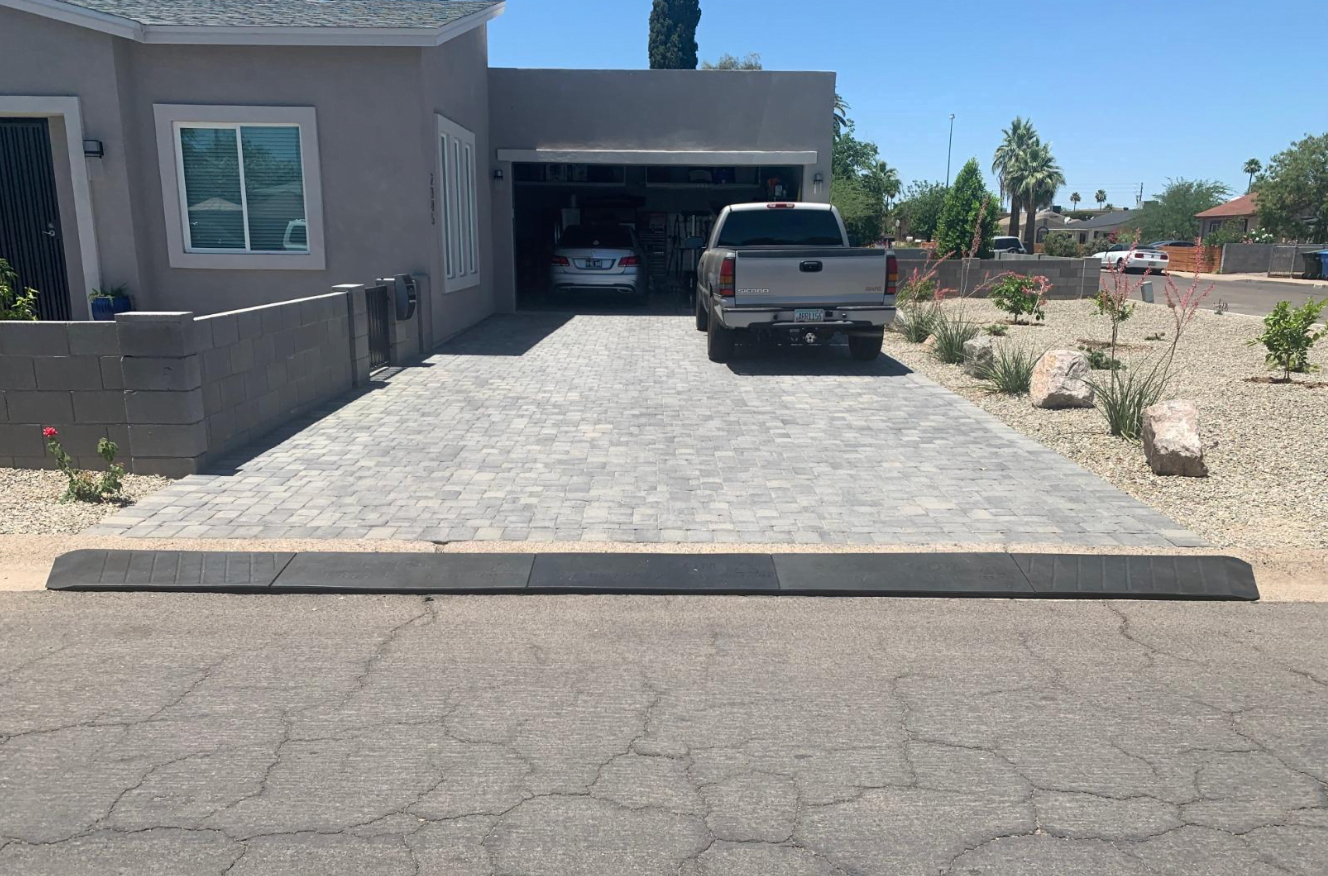
Choosing the right size and weight capacity for your driveway curb ramp is indispensable for guaranteeing safety and efficiency. Different ramps come in various dimensions and weight capacities, catering to a wide range of vehicles’ needs. For example, some common sizes include 48.0’’ x 16.0’’ x 2.6’’ and 48.4”L x 16.1”W x 2.6”H. You must check the dimensions of the ramp you plan to buy to guarantee it fulfills your requirements.
When considering the weight capacity of a driveway curb ramp, make sure it can support the weight of your vehicle. The weight capacity varies depending on the product, so always check the specific ramp’s capacity before purchasing to guarantee its suitability for your vehicle.
Vehicle Compatibility
Driveway curb ramps are designed to accommodate a wide range of vehicles, from low cars to heavy trucks, while also addressing the issue of curbs. All vehicles are compatible with the products offered by curb ramp companies, ensuring that your vehicle can smoothly and safely access your driveway regardless of its size or ground clearance. For example, multi-purpose sidewalk curb ramps can accommodate up to class 6 vehicles, which is equivalent to 3.25 tons per ramp.
In addition to supporting various vehicle types, some driveway curb ramps also feature cable runway access that can accommodate cable diameters of up to 0.75 inches. This ensures that your driveway remains accessible and safe for both vehicles and pedestrians.
Driveway Curb Ramp Solutions
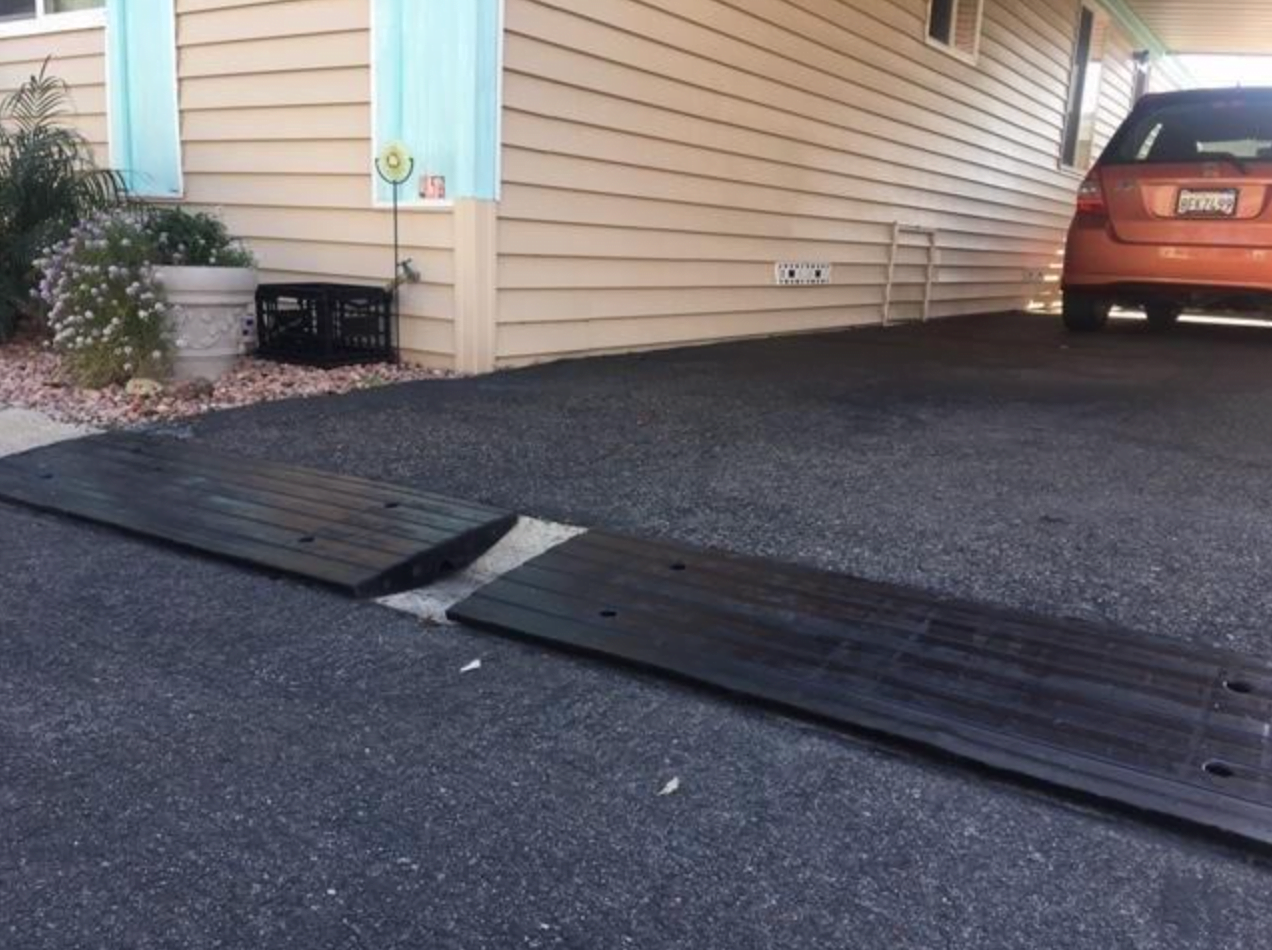
There are two primary driveway curb ramp solutions available: heavy rubber ramps and rebuilding with concrete. Each solution offers its own set of advantages, and the choice between them depends on your individual needs and preferences. Heavy rubber ramps, for example, provide protection for vehicles from damage and repairs and are easy to install, making them a popular choice for those looking for a quick and convenient solution.
On the other hand, rebuilding with concrete offers a more permanent and customizable option, ensuring increased accessibility and convenience.
Let’s thoroughly examine these solutions and understand the benefits of heavy rubber ramps and the alternative of rebuilding with concrete to assist you in making an optimal decision for your driveway needs.
Heavy Rubber Ramps
Heavy rubber ramps are a popular driveway curb ramp solution for rolled curbs due to their durability, affordability, and ease of installation. These ramps are constructed of rubber and offer a seamless transition from the curb to the driveway, protecting your vehicle’s undercarriage, bumper, and tires from damage. In addition, rubber ramps are easy to install and can be placed in position without any extensive construction or modifications to the driveway.
Safety is another critical factor to consider, and heavy rubber ramps excel in this aspect. The non-slip texture surface provides grip for vehicles, reducing the risk of accidents or slips when transitioning from the curb to the driveway. This makes them an ideal choice for those looking to enhance the safety and accessibility of their driveway.
Rebuilding with Concrete
Rebuilding your driveway curb with concrete is another viable solution, offering a more permanent and customizable option. Concrete ramps have several advantages.
They are durable and can support heavy weight, thus preventing movement and damage.
They are resistant to street sweepers.
They provide a seamless entry onto the driveway.
Rebuilding with concrete can be a high-cost solution compared to other alternatives, although it offers long-lasting performance and low maintenance requirements. It may involve more extensive construction work than installing a heavy rubber ramp, so it’s essential to weigh the pros and cons before committing to this solution.
Enhancing Safety and Traction with Driveway Curb Ramps

Maintaining the safety and traction of your driveway curb ramp is vital for a secure, hassle-free experience for both drivers and pedestrians. Driveway curb ramps come equipped with various features designed to improve grip, prevent slipping, and accommodate pedestrians, such as:
Non-slip surfaces
Grooved stripes
Aggressive punch plate traction
Textured style surfaces
Ribbed treads
By enhancing the safety and traction features of your driveway curb ramp, you can minimize the risk of accidents and ensure smooth and secure access for all types of vehicles and pedestrians, with proper permission.
Let’s examine these features in depth and understand their role in enhancing the performance of your driveway curb ramp.
Superior Traction Features
Superior traction features such as deep ribbed treads and textured surfaces can greatly enhance the safety and performance of your driveway curb ramp. These features provide improved grip for vehicles, minimizing the risk of slipping and sliding on wet or icy surfaces. Additionally, they offer better traction and stability, thereby reducing the likelihood of accidents.
For example, the deep tread on some driveway curb ramps offers enhanced traction and improved grip in slippery conditions, making it ideal for steep driveways. By opting for a ramp with superior traction features, you can ensure safe and secure access for your vehicle, regardless of the weather conditions.
Slippery Condition Solutions
Slippery conditions can pose a significant challenge for drivers and pedestrians alike. Driveway curb ramps with built-in solutions for slippery conditions can greatly enhance safety and performance. Some features that can provide extra traction in slippery conditions include:
Ramps with drainage systems
Slip-resistant materials
Non-slip textured surfaces
Anti-slip surface textures
Ribbed patterns or deep ribbed treads
These features can help prevent accidents and improve traction in slippery conditions.
By choosing a driveway curb ramp equipped with traction for slippery conditions, you can ensure safe and secure access for vehicles and pedestrians, even during adverse weather conditions. This not only minimizes the risk of accidents but also provides peace of mind knowing that your driveways are safe and accessible at all times.
Pedestrian Accessibility
Ensuring pedestrian accessibility is an essential aspect of any driveway curb ramp. Ramps that include cable runway access and smooth transitions for wheelchairs and strollers can greatly enhance the overall safety and convenience of your driveway. Driveway curb ramps should provide an accessible route from the roadway to the curbed sidewalk and comply with ADA standards.
By incorporating pedestrian accessibility features into your driveway curb ramp, you can create a safe and comfortable environment for all users, including those with mobility challenges. This not only enhances the overall functionality of your driveway, but also demonstrates your commitment to creating an inclusive and accessible space for everyone.
Installing and Maintaining Your Driveway Curb Ramp
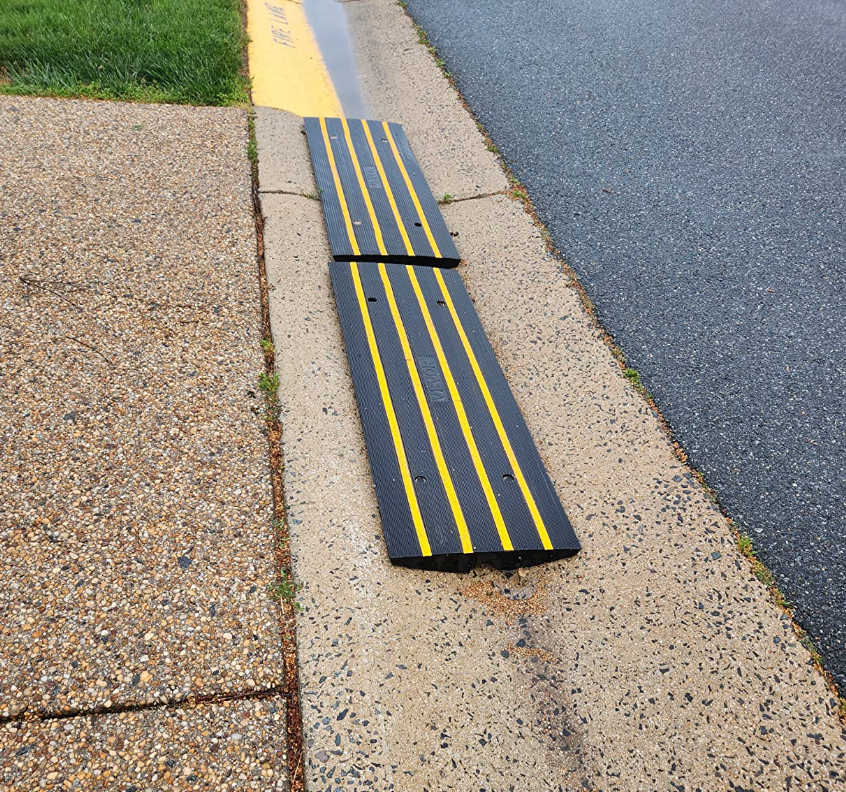
Correct installation and upkeep of your driveway curb ramp are key to guaranteeing optimal performance and longevity. By following the recommended installation steps and regularly inspecting and maintaining your ramp, you can prevent potential damage and prolong its useful life.
In the following section, valuable tips will be shared on how to install and maintain your driveway curb ramp, ensuring its prime condition for years to come.
Whether you are a DIY enthusiast or prefer to enlist professional help, understanding the installation process and maintenance requirements will help you make the most of your driveway curb ramp investment. Let’s delve into the steps involved in installing and maintaining your ramp for the best results.
Installation Steps
Following the proper installation steps is vital to ensure your driveway curb ramp is securely and correctly installed. Here are the steps to follow.
Measure the area where the ramp will be installed using a tape measure to determine the appropriate size and location.
Prepare the area by clearing any debris and ensuring the ground is level and flat.
Connect the pieces and you are done!
Maintenance Tips
Regular maintenance is essential to keep your driveway curb ramp in top condition and extend its lifespan. Here are some steps to follow.
Periodically inspect your ramp for signs of wear and tear.
Address any damage promptly to prevent further deterioration.
Ensure the ramp remains level by checking for any irregularities in the surface and adjusting as needed.
By following these steps, you can maintain the stability and performance of your driveway curb ramp.
In case of slippery conditions, consider adding traction strips or sand to the ramp to improve traction and prevent accidents. By following these maintenance tips, you can ensure that your driveway curb ramp remains in optimal condition and continues to provide safe and smooth access for your vehicle and pedestrians alike. Do not do this step if the manufacturer didn’t recommend it.
Comparing Driveway Curb Ramp Prices and Shipping Options
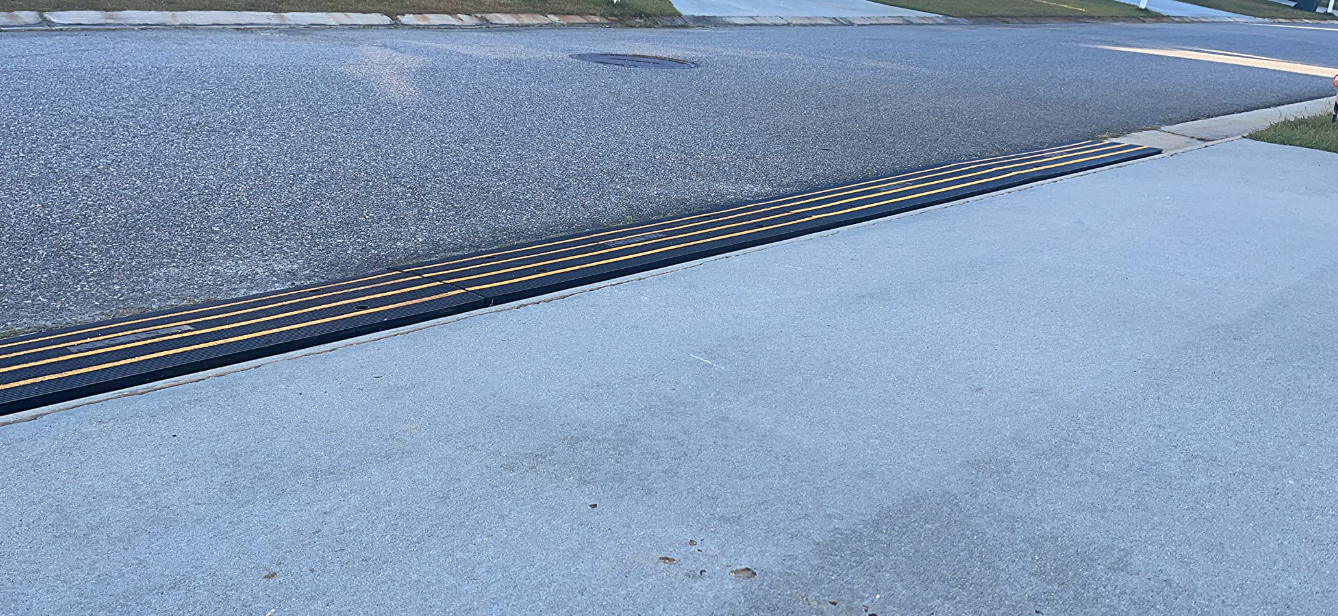
When considering a driveway curb ramp, it’s important to compare prices and shipping options to guarantee the best value for your investment. Driveway curb ramp prices can vary depending on factors such as the type, size, and materials used, with prices ranging from approximately $50 to over $1000. Shipping options may also vary depending on the retailer, but many offer free shipping or delivery for orders exceeding a certain amount.
By comparing driveway curb ramp prices and shipping options, you can make an informed decision and choose a ramp that offers the best combination of quality, durability, and value for your specific needs.
Let’s delve into the factors that can impact the cost of a driveway curb ramp, as well as key shipping considerations to bear in mind while making your purchase.
Price Range
The price range for driveway curb ramps can vary, depending on factors such as the material, size, and weight capacity. For example, rubber, concrete, and plastic are common materials used in the construction of driveway curb ramps, each with its own set of advantages and price points. Additionally, various sizes are available to accommodate different driveway widths and vehicle types, which can also influence the cost.
Understanding the price range for different driveway curb ramp options will help you make an informed decision and ensure that you’re investing in a ramp that meets your needs without breaking the bank. Consider factors such as durability, ease of installation, and vehicle compatibility when comparing prices to find the best value for your investment.
Shipping Considerations

Shipping options and costs are another important factor to consider when purchasing a driveway curb ramp. Be sure to factor in the shipping time, delivery options, and the weight of the ramps when making your decision.
Additionally, consider whether you may need to order additional pieces to cover the full width of your driveway, and take into account any assembly requirements that may be necessary for your chosen ramp.
By considering shipping options and costs, as well as potential assembly requirements, you can make a more informed decision and choose a driveway curb ramp that not only meets your needs but also arrives in a timely manner and is easy to install.
Long-Term Durability
When contemplating a driveway curb ramp, it’s important to assess the long-term durability of different materials and designs to make a wise investment. Driveway curb ramps are typically constructed from materials like recycled tire rubber or premium recycled PVC, which are known for their durability and longevity.
A durable and long-lasting driveway curb ramp will not only provide smooth and secure access for your vehicle, but also save you money in the long run by preventing the need for frequent replacements. By evaluating the long-term durability of various driveway curb ramp options, you can make an informed decision and invest in a ramp that will stand the test of time.
Summary
Driveway curb ramps are an essential addition to any driveway with a rolled curb or steep incline, providing a smooth and damage-free entry and exit for vehicles. By understanding the various factors involved in choosing the right ramp, such as material options, size, weight capacity, and vehicle compatibility, you can make an informed decision and invest in a ramp that meets your specific needs.
In addition to selecting the right ramp, it’s crucial to ensure proper installation, regular maintenance, and long-term durability to maximize the benefits of your investment. By following the tips and advice provided in this blog post, you can create a safe and accessible driveway that not only protects your vehicle but also enhances the overall functionality and convenience of your property.
Frequently Asked Questions
Can I put a ramp on the curb?
It is not recommended to install a DIY concrete curb ramp as local law enforcement could view it as defacing public property and you could be liable for any repairs that have to be made when it needs to be removed.
How to build a curb ramp on a driveway?
To build a curb ramp on a driveway, clean the area to ensure good adherence and pressure wash if needed.
Then tape off the upper section.
What is the best driveway ramp for low cars?
The BRIDJIT 3-piece Expandable Curb Ramp is the best driveway ramp for low cars, as it reduces the jarring effect of driving over a residential rolled curb by 80%.
It is easy to install and highly durable, making it the most effective solution on the market.
What do you call the ramp on a curb?
A curb ramp, also known as a curb cut or kerb ramp, is a solid concrete ramp connecting the street to the sidewalk for people with mobility impairments to safely transition between the two.
What materials are commonly used for driveway curb ramps?
Rubber, plastic and metal are the most commonly used materials for building driveway curb ramps.

